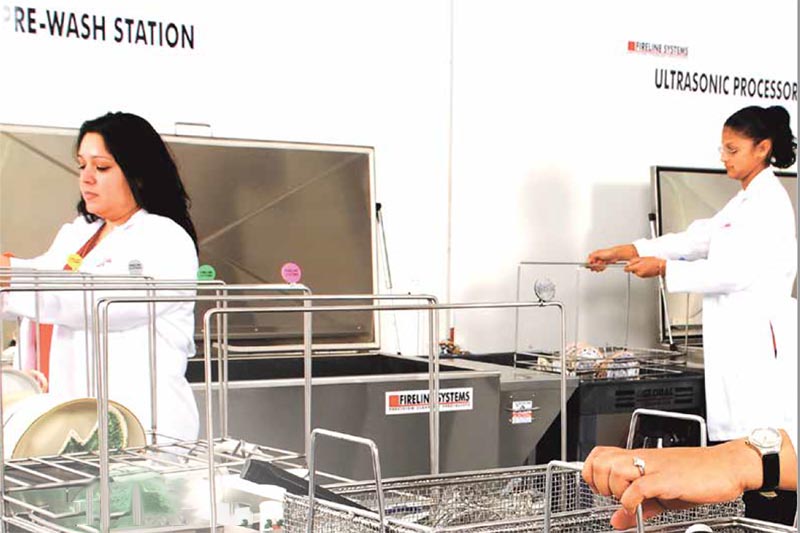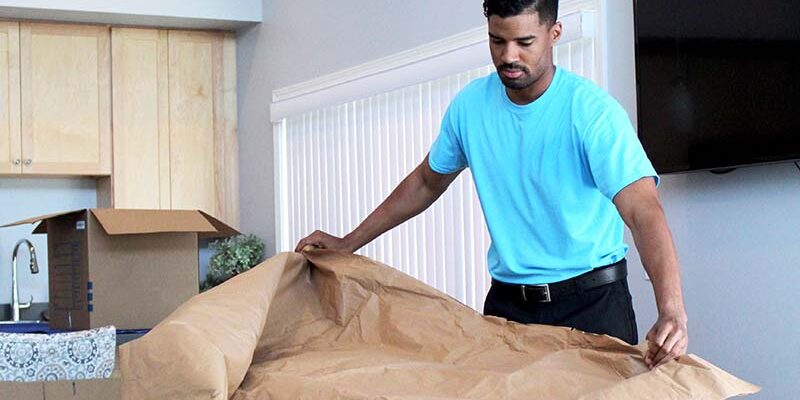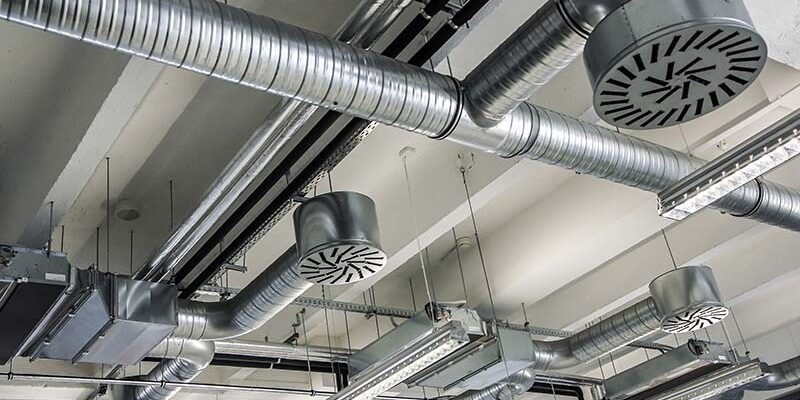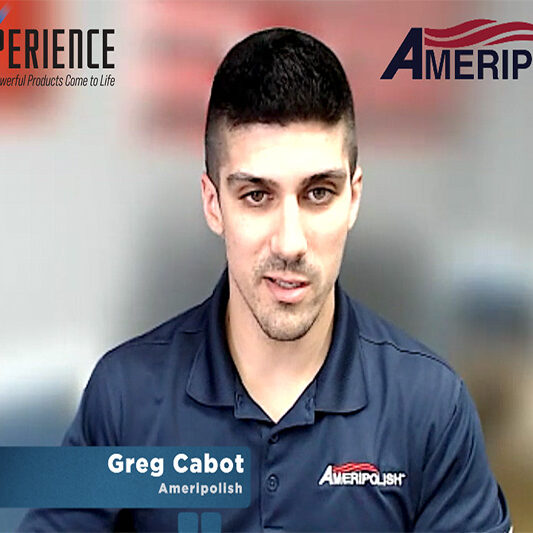Caring for the Contents

By Jeff Cross
It could be compared to going out to your favorite restaurant and ordering a nice steak dinner with all the trimmings and eating everything but the steak — leaving it behind, untouched.
You still had the meal — and it was tasty, especially the grilled asparagus — but was it the best meal?
Restoration contractors perform many tasks, from structural drying to reconstruction, mold remediation, fire and smoke restoration, and more. What they often do is leave something valuable behind, untouched.
Of course, they may contract it out to another company instead of doing it themselves and earn a fraction of what they could have.
What is it? The lucrative service of contents cleaning and restoration.
Due to the shortage of companies who offer quality contents cleaning and restoration services, insurance adjusters often write off and, instead, offer replacement dollars to the insured for valuable, but damaged, contents that could have been salvaged and restored — that is, if the restoration contractor on the job had offered the service.
And when contractors attempt to tackle specialized contents cleaning and restoration — without proper training and equipment — the situation can go bad… real fast.
The challenge
Historically, contents work has either been ignored or pushed onto the insured’s “to-do” list, as in “Ma’am, just wash those in the sink like normal.” Or, items were simply replaced with insurance dollars.
What about today? It seems, even with advancements in technology and processes, that the quality of contents cleaning and restoration is often substandard. Why is that? What is the problem? And is it getting any better?
“Unfortunately, there have never been any official industry standards to help restorers navigate contents restoration,” according to David Mazur, president of the Fireline Contents Network. “There are many moving parts to contents restoration, and restorers do the best they can based on the current experience of their contents team and their collective job experiences. This has created an industry where service quality has been largely inconsistent, frequently prompting adjusters to write off claims that could be and should be effectively restored.”
The good news, Mazur explains, is there is now technology and training to help restorers successfully negotiate the process.
Mazur notes that most restoration companies have their roots in the construction industry, which might explain why many restorers are not excited about contents cleaning and restoration. “I spoke to an owner of a restoration company recently who was contemplating expanding his contents division. He told me outright that he had delayed the expansion because he was a builder at heart and, as he put it, ‘Builders don’t do dishes.’ This may help explain why most full-service restoration companies struggle with a contents business,” Mazur laments.
The solution
For whatever reason, many restorers resist implementing the tools and training required to successfully engage with the process. “There seems to be no rhyme or reason for this thought process, because modern-day contents restoration executed properly provides profit margins that rival the mitigation business,” Mazur says.
However, there now appears to be a movement of sorts in the contents cleaning and restoration industry. Many contractors are reassessing their position, realizing that they are missing out on a viable business opportunity that could help grow their organizations, Mazur adds.
What are they doing? Many are investing the money required to transform their “status quo” contents divisions into modern-day contents processing centers.
However, Mazur warns, an investment in equipment does not necessarily translate into improved efficiency and profitability. “Although there is no question that modern-day technology can speed up the production process and help restorers recover items previously thought to be non-restorable, true success is achieved by implementing managerial and technical services techniques specifically relevant to the contents restoration is this model.”
This means there is a need to combine modern-day technology and proven service methodologies implemented by an educated — and fully-trained — contents team. This results in more effective, higher quality service companies who recover more items, produce higher productivity rates, and deliver consistent cleaning quality to insurers and stakeholders.
And they enjoy a healthier bottom line for their efforts.
Business strategies
The most common mistakes made in setting up and operating a contents division have their origin in utilizing the wrong business model. While many have a background in mitigation or structural reconstruction, that’s no guarantee of success when venturing into contents cleaning while sticking with the same business model.
“The first mistake begins, as they think ‘Just how hard can it be? It’s just cleaning,’” Mazur explains. “On top of that, the adjuster community and pricing databases all undervalue the labor component as unskilled labor. Supervisor hours are commonly not allowed, and contents processors are told to remove them from their invoices.”
Contents cleaning and restoration is complicated and complex, and the road to efficiency is riddled with potholes that cannot be successfully negotiated simply by purchasing equipment, Mazur adds.
[one_half]
It’s a business decision that must be considered carefully.
The process
Barb Jackson is the founder of Total Contentz, a training, consulting, and facility design company. She believes that contents cleaning and restoration work — when done properly and with trained personnel who are detail-oriented — can be very profitable. Yet she also knows the challenges that come with this type of work.
“There are many pitfalls, which can cost you the entire profitability of a job,” she warns. “Breakage, accusations of theft, and inefficiencies are just a few examples. I recommend a conservative approach for getting into contents restoration.”
Jackson suggests starting slow, entering the contents industry in a way that allows you to become familiar with the challenges to overcome them and avoid becoming overwhelmed by the task.
“I would start with on-site contents cleaning. Many times, it will be a water loss that requires minimal cleaning,” she says. “Furniture and small contents with drywall dust can be HEPA vacuumed and then wiped down with damp microfiber cloths. A small fire loss may have light soot on the horizontal surfaces, which often can be cleaned in situ.”
And… what about pack-outs?
“They should only be performed when you have a safe storage and staging area to clean and store the contents,” Jackson adds. “A key factor for success is to properly wrap, bag, or box every item or piece of furniture. Use moving blankets when packing the truck, and learn the proper cleaning techniques.”
Technical training workshops help restoration contractors determine types of cleaning agents and techniques for use on specific contents and will provide guidance on determining the restorability of items. Training provides an understanding of the variety of surfaces to clean and types of residues such as dry, wet, or oily. Necessary education is also provided on deodorizing.
Mazur adds: “Contractors must realize that efficiency and profitability begins with accessing the right training and education and staying true to the implementation of these service methodologies. Only then can they expect to see real and tangible results.”
[/one_half]
[one_half_last]
[infobox title=’A Soft Contents Case Study‘][/infobox]
— Submitted by Ken Campbell,
Vice President of the ECONA Network
There are plenty of opportunities to increase revenues by bringing soft and hard contents cleaning in house. But you need the right equipment and technology. As part of the ECONA Network, we support 265 restoration and remediation service providers nationwide. To illustrate an example of how our members operate, here is a brief case study.
JP Maguire Associates is an independent cleaning and property restoration and reconstruction services firm, operating in a 37,000-square foot facility in Connecticut. They were faced with the difficult task of restoring 1,000 pounds of smoke- and soot-infested clothes lost to a garage fire.
After securing the premises, they provided the homeowners with two weeks’ worth of soft contents, such as clothing, shoes, belts, handbags, kid’s backpacks, etc., as an interim solution. They cleaned this initial batch within 24 hours.
Then they got to work. JP Maguire used the patented iS4000 Esporta Wash System, which can process up to a 100-pound load at a time. All told, for the full restoration of the 1,000-pound project, JP Maguire took 20 hours to complete the job, after running an average wash cycle of two hours, plus the time allotted to drying, pressing, and delivery.
JP Maguire identified five areas of benefit to their company:
Going green and not contributing to landfills or using potentially hazardous chemicals associated with dry-cleaning.
Bringing soft contents cleaning in house to increase savings on outsourcing.
Higher margins and increased profits from processing their own contents.
Providing a positive customer experience, resulting in referrals.
Considering trends in contents restoration, insurance carriers realize substantial savings per claim settlement, which should translate into lower premiums for insureds.
[/one_half_last]
Is contents cleaning and restoration for you?
Most companies are on the hunt for diversification opportunities, and contents cleaning and restoration is a prime example of a profitable option.
Contents work can include electronics restoration, ultrasonic cleaning, soft contents processing, furniture and upholstery cleaning, rug cleaning, and even specialty cleaning, such as fine artwork restoration.
“Full-service contents restorers are perceived to be better because they have total control over service quality and speed up production,” Mazur says. “There is no question that the service spotlight is shining brightly on the contents services business and is providing contractors with a new business opportunity that are just too attractive to ignore.”
Is it for you? Crunch the numbers, do your research, and ask your peers who engage in this type of diversified service. Gather all the information you can before deciding.
Contents cleaning and restoration may end up a good fit for you and your company.
Jeff Cross is the executive editor of Cleanfax and is an industry trainer and consultant. He can be reached at [email protected].












